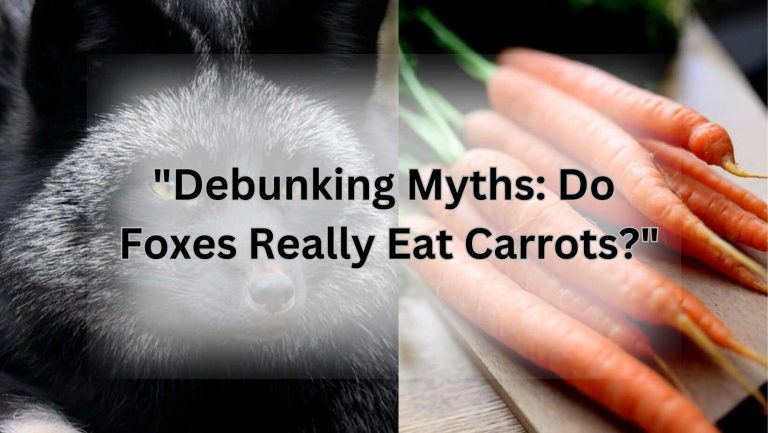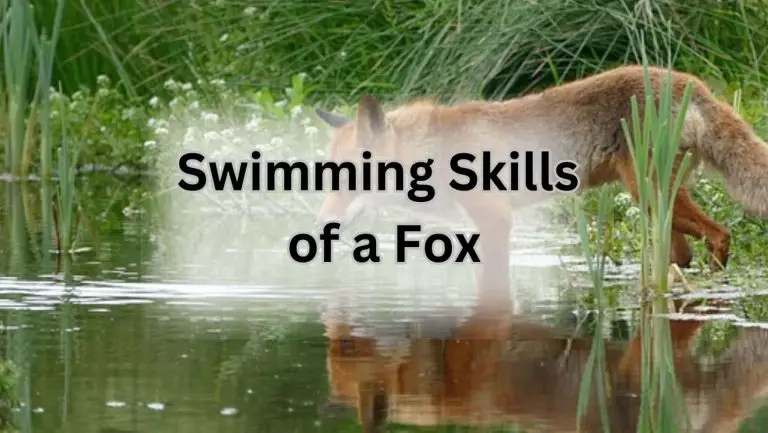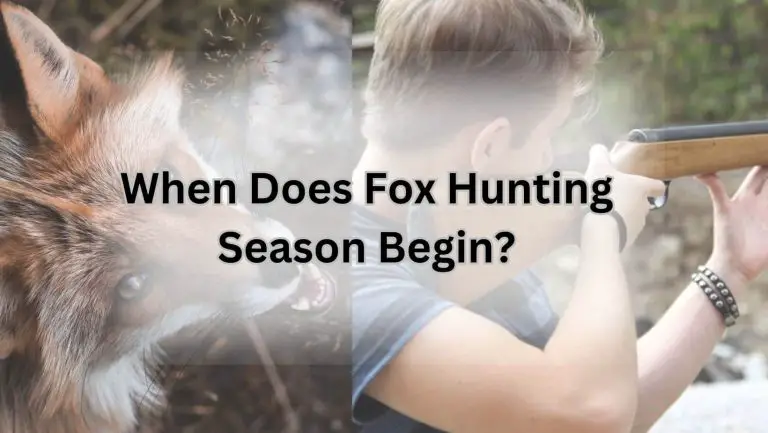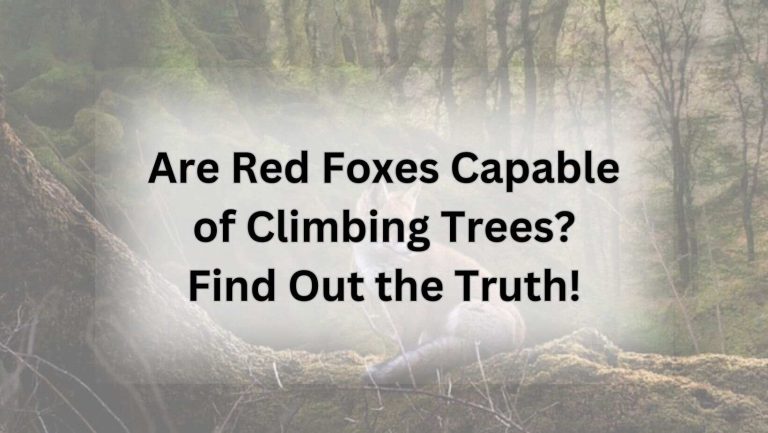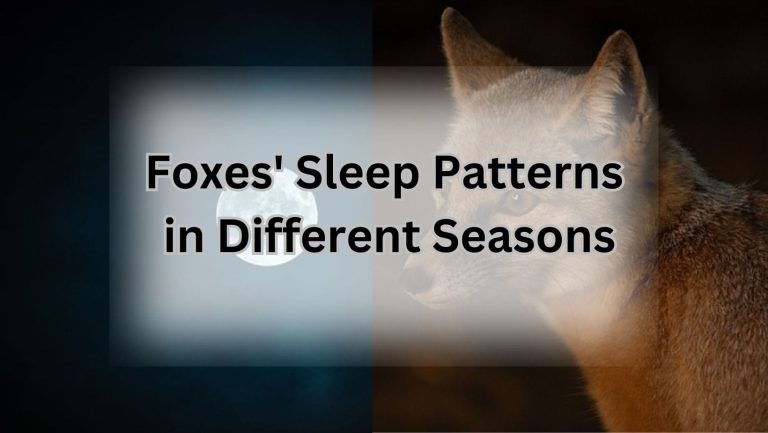Unveiling the Fascinating Life Cycle of a Sly Fox
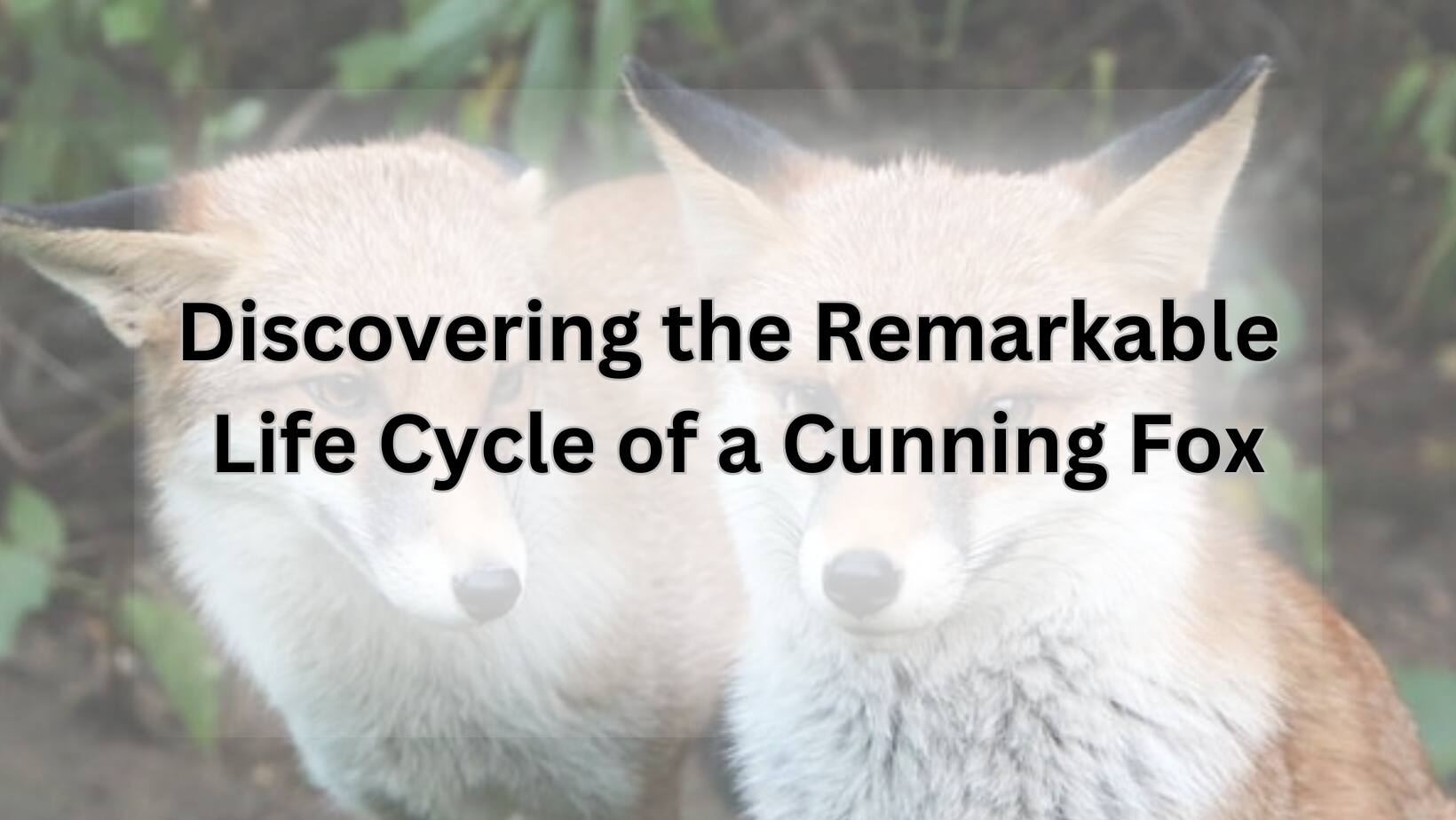
Introduction of a Life Cycle of a Fox
Understanding the life cycle of a fox is crucial for gaining insights into the behavior, adaptations, and survival strategies of these fascinating creatures. From reproduction to development stages, each phase plays a vital role in the fox’s life. Let’s delve into the intricate details of a fox’s life cycle to unravel the mysteries of these cunning and resilient animals.
Importance of Understanding Fox Life Cycles
Ever wondered how foxes manage to thrive in various environments and outsmart their prey? Exploring the life cycle of a fox can provide valuable insights into their survival mechanisms, social structures, and interactions with their surroundings. By understanding the different stages of a fox’s life, we can appreciate the complexity of nature and the remarkable adaptations that enable these creatures to thrive in the wild.
Habitat and Behavior of Foxes
Have you ever observed a fox in its natural habitat and marveled at its agility and cunning behavior? Foxes are known for their resourcefulness and adaptability, making them successful predators in a wide range of ecosystems. From urban areas to forests, these versatile animals have carved out a niche for themselves through their clever hunting techniques and social dynamics. Let’s explore the habitat preferences and behavioral patterns of foxes to gain a deeper understanding of their fascinating lives.
Fox Reproduction
Mating Season of Foxes
Ever wondered when the love is in the air for our foxy friends? Well, foxes typically mate during the winter months, from December to February. This is when they start their courtship rituals, which can involve playful chasing and vocalizations. It’s like a romantic comedy in the animal kingdom!
Gestation Period of Foxes
Now, let’s talk about the baby-making process! After the foxes successfully mate, the female fox, also known as a vixen, undergoes a gestation period of about 52 days. During this time, she prepares a den for her upcoming litter. It’s like redecorating for a new family member!
Birth and Care of Fox Pups
And voilà! The adorable fox pups are born in the comfort of their den. A typical litter can consist of 4 to 6 pups, and they are born blind and completely dependent on their mother for care. The vixen diligently nurses and protects her pups until they are old enough to venture out on their own. It’s like a full-time job for the mama fox!
So, there you have it, the fascinating world of fox reproduction. From courtship to caring for the little ones, these cunning creatures sure know how to keep the circle of life going. Stay tuned for more insights into the enchanting life cycle of our foxy friends!
Fox Development
Growth Stages of Fox Kits
Ever wondered how those adorable little fox kits grow up to be cunning and agile predators? Well, let me take you on a journey through the growth stages of these fluffy creatures! From tiny, helpless newborns to independent and fierce hunters, the development of fox kits is truly fascinating.
Learning to Hunt and Survive
Have you ever thought about how foxes learn to survive in the wild? It’s not like they can just sign up for a hunting class! Fox kits actually learn essential skills from their parents, such as stalking, pouncing, and catching prey. It’s like a crash course in hunting 101, but with cute little foxes!
Independence from Parents
When do fox kits finally spread their wings (or should I say paws) and venture out on their own? After months of learning from their parents, fox kits eventually reach a stage where they are ready to leave the den and start their own adventures in the big, wide world. It’s like a coming-of-age story, but with foxes instead of humans!
So, there you have it! The growth stages of fox kits, their journey to becoming skilled hunters, and their eventual independence from their parents. Next time you see a fox in the wild, remember the incredible life cycle that brought them to where they are today. It’s a wild world out there, and foxes are truly remarkable creatures!
Fox Diet and Feeding
Types of Food Consumed by Foxes
Ever wondered what’s on the menu for our foxy friends? Well, let’s dive into the delectable delights that make up a fox’s diet. From small rodents like mice and voles to insects, fruits, and even the occasional bird, foxes are quite the versatile eaters. They’re like the gourmet chefs of the wild, whipping up a feast from whatever nature provides.
Hunting Techniques of Foxes
How do these cunning creatures catch their meals? Foxes are skilled hunters, using a combination of stealth, agility, and patience to secure their next snack. They stalk their prey, pounce with lightning speed, and sometimes even dig to uncover hidden treats. It’s like watching a masterclass in the art of hunting!
Role of Diet in Fox Life Cycle
Now, let’s talk about the importance of a balanced diet in the life of a fox. Just like us, these furry critters need the right nutrients to thrive. A healthy diet not only keeps them strong and energetic but also plays a crucial role in their reproduction and survival. So, next time you see a fox enjoying a meal, remember that it’s not just about filling their belly – it’s about fueling their whole life cycle.
And there you have it – the ins and outs of a fox’s diet and feeding habits. From gourmet meals to expert hunting techniques, these clever creatures sure know how to keep their bellies full and their spirits high. So, next time you spot a fox in the wild, take a moment to appreciate the culinary skills that make them the top predators of the forest!
5. Fox Predators
5.1 Natural Predators of Foxes
Ever wondered who gives the sly fox a run for its money in the wild? Well, let’s talk about the natural predators that keep these cunning creatures on their toes. Foxes have quite a few enemies out there, including wolves, coyotes, eagles, and even larger cats like mountain lions. These predators have their eyes set on a fox’s fluffy fur and tasty meat, making them a constant threat in the animal kingdom.
5.2 Threats to Fox Population
What dangers lurk in the shadows for our foxy friends? Human activities such as habitat destruction, pollution, and hunting pose significant threats to fox populations worldwide. As urban areas expand and natural habitats shrink, foxes find themselves struggling to survive in a rapidly changing environment. It’s a tough world out there for these clever critters!
5.3 Adaptations for Survival
How do foxes manage to outsmart their predators and thrive in the wild? These cunning canids have developed a range of adaptations to ensure their survival. From their keen senses of smell and hearing to their lightning-fast reflexes and ability to climb trees, foxes are well-equipped to evade danger and secure their place in the food chain. They also have the remarkable ability to adapt to different environments, making them highly versatile and resilient creatures.
In the wild world of foxes, it’s a constant game of cat and mouse (or should I say fox and predator?). While they may face numerous threats, these crafty creatures have what it takes to outwit their enemies and emerge victorious. So, the next time you spot a fox darting through the woods, remember to tip your hat to these furry survival experts. They may be small, but they sure know how to hold their own in the wild!
Fox Communication
Vocalizations of Foxes
Ever wondered how foxes communicate with each other? Well, let’s dive into the fascinating world of fox vocalizations! Foxes are known to produce a variety of sounds, from barks and screams to howls and growls. These vocalizations serve different purposes, such as signaling danger, establishing territory, or attracting mates. Have you ever heard the eerie scream of a fox in the night and wondered what it meant? That spine-chilling noise is often a territorial call, warning other foxes to stay away. It’s like the fox’s way of saying, “This is my turf, buddy!”
Body Language and Gestures
Foxes are not just vocal creatures; they also rely on body language and gestures to communicate with each other. Have you ever observed a fox flicking its tail or flattening its ears? These subtle movements convey a wealth of information about the fox’s mood and intentions. For example, a fox with its tail held high is likely feeling confident and alert, while a fox with its ears flattened back may be feeling threatened or submissive. It’s like they have their own secret code of non-verbal communication!
Scent Marking and Territory
Foxes are also big fans of leaving their mark – quite literally! They use scent marking as a way to communicate with other foxes and establish their territory. Have you ever come across a pungent smell while hiking through the woods? Chances are, you stumbled upon a fox’s scent mark. These marks contain pheromones that convey messages about the fox’s identity, status, and breeding readiness. It’s like a fox’s way of saying, “Hey, this is my place, so back off!” So, next time you catch a whiff of that distinct fox scent, remember that it’s their way of saying hello.
In conclusion, the world of fox communication is a rich and diverse one, filled with vocalizations, body language, and scent marking. By understanding how foxes communicate, we can gain a deeper appreciation for these clever and resourceful creatures. So, the next time you encounter a fox in the wild, pay attention to their unique methods of communication – you might just learn something new!
Fox Social Structure
Family Units of Foxes
Ever wondered how fox families work? Let’s dive into the fascinating world of fox social structure! Foxes typically live in small family units consisting of a mating pair and their offspring. These families work together to hunt, protect their territory, and raise their young. The parents play crucial roles in teaching their pups essential survival skills, such as hunting techniques and how to communicate through vocalizations and body language. It’s truly a team effort in the fox family!
Hierarchies Among Foxes
Do foxes have a pecking order? Absolutely! Within a fox family, there is a hierarchy that determines the roles and behaviors of each individual. The dominant male and female are typically the breeding pair and hold the highest rank. Subordinate members, such as younger siblings or non-breeding adults, follow the lead of the dominant pair. This hierarchy helps maintain order within the family unit and ensures that everyone has a specific role to play.
Interactions with Other Animals
Foxes are not solitary creatures – they interact with a variety of other animals in their environment. From playful interactions with other fox families to territorial disputes with neighboring predators, foxes are constantly navigating their social landscape. They communicate through a complex system of vocalizations, scent marking, and body language to establish boundaries and relationships with other animals. It’s a dynamic and ever-changing world out there for our foxy friends!
So, next time you spot a fox in the wild, take a moment to appreciate the intricate social structure that governs their lives. From family dynamics to hierarchies and interactions with other animals, foxes are truly fascinating creatures with a rich social life. Keep an eye out for these clever canids and observe their behaviors – you never know what exciting social interactions you might witness in the wild!
8. Fox Lifespan
8.1 Average Lifespan of Foxes
Have you ever wondered how long a fox can live in the wild? Well, let me tell you, on average, foxes have a lifespan of 3 to 4 years. However, some lucky ones can reach up to 10 years of age. These clever creatures have adapted well to their environment, allowing them to survive for several years in the wild.
8.2 Factors Affecting Fox Longevity
What factors influence the lifespan of these fascinating animals? The longevity of foxes can be affected by various factors such as food availability, predation, diseases, and human interference. Foxes that have access to abundant food sources and are not heavily hunted tend to live longer lives.
8.3 End of Life Cycle for Foxes
So, what happens at the end of a fox’s life cycle? When a fox reaches the end of its life, it may experience a decline in health and physical abilities. As they age, they may become more vulnerable to predators and diseases. Eventually, old age catches up with them, and they pass away peacefully in their natural habitat.
Remember, foxes are resilient creatures that have adapted to survive in various environments. By understanding their lifespan and the factors that affect it, we can appreciate these magnificent animals even more. So, next time you spot a fox in the wild, take a moment to admire its beauty and resilience.
9. Human Impact on Foxes
9.1 Habitat Loss and Fragmentation
Ever wondered how our actions affect the homes of these cunning creatures? Imagine a fox trying to navigate through a maze of concrete jungles and disappearing green spaces. It’s like a never-ending game of hide and seek, but with real consequences. As we continue to encroach on their territories, we disrupt their natural habitats, making it harder for them to find food and shelter.
9.2 Hunting and Trapping of Foxes
Do you think foxes have a natural predator like in the movies? Well, unfortunately, humans have taken on that role. From hunting for sport to trapping for fur, these clever critters face threats from all angles. It’s like they’re constantly playing a high-stakes game of survival, with humans holding all the cards.
9.3 Conservation Efforts to Protect Fox Population
What if we could turn the tables and become the protectors of these sly creatures? Conservation efforts play a crucial role in ensuring the survival of fox populations. By creating protected areas, implementing regulations on hunting, and raising awareness about the importance of these animals, we can give them a fighting chance in this human-dominated world.
So, next time you spot a fox darting through the bushes or hear their eerie cries in the night, remember that they are not just characters in folktales but real beings facing the challenges of a rapidly changing world. It’s up to us to decide if we want to be their allies or adversaries in this wild game of life.
10. Conclusion
Recapping the fascinating life cycle of a fox, we have delved into the intricacies of its reproduction, development stages, breeding cycle, life span, and population dynamics. Understanding these aspects is crucial for appreciating the resilience and adaptability of these remarkable creatures. As a Canid Wild Life Lover with 20 years of experience, the importance of fox conservation cannot be overstated.
10.1 Recap of Fox Life Cycle
How does a fox transition from a cute little cub to a sleek and cunning predator? Exploring the reproduction cycle, development stages, and breeding cycle sheds light on the remarkable journey that a fox undertakes throughout its life. From playful kits to independent adults, each stage is essential for survival in the wild.
10.2 Importance of Fox Conservation
Why should we care about the population dynamics of foxes? As nature’s efficient hunters, foxes play a vital role in maintaining ecological balance. By conserving their habitats and protecting their populations, we ensure the continuity of a species that is not only fascinating but also integral to the ecosystem.

